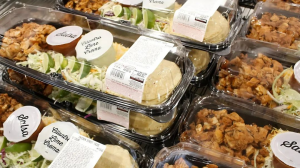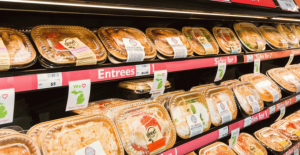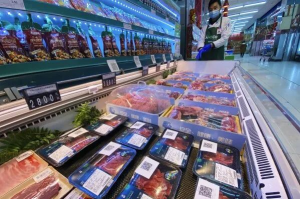
Pre-prepared vegetables use food industry technology to professionally analyze various vegetable raw materials, and use scientific and technological methods to ensure the freshness and flavor of the dishes; pre-prepared vegetables save the trouble of purchasing food raw materials and simplify the production steps. After being packaged hygienically and scientifically, and then heated or steamed, it can be used directly as a convenient special dish on the table. Pre-prepared dishes must pass food inspection before being served. What are the tests for pre-prepared dishes? Standard inventory of prepared dishes.
examination range:
(1) Ready-to-eat food: prepared prepared food that can be eaten after opening, such as ready-to-eat chicken feet, beef jerky, eight-treasure porridge, canned food, braised duck neck, etc.
(2) Ready-to-heat food: Food that is ready to eat after being heated in a hot water bath or microwave oven, such as quick-frozen dumplings, convenience store fast food, instant noodles, self-heating hot pot, etc.
(3) Ready-to-cook foods: Foods that have been processed and packaged in portions. Foods that are ready to eat after stir-frying, re-steaming and other cooking processes are added as needed, such as refrigerated steaks and refrigerated steaks. Preserved chicken cubes, refrigerated sweet and sour pork, etc.
(4) Ready-to-prepare food: After preliminary processing such as screening, cleaning, cutting, etc., the clean vegetables are packaged in portions and need to be cooked and seasoned before they can be eaten.
Key points for testing prepared dishes usually include the following:
1. Microbial testing: Detect the number of microorganisms such as E. coli, salmonella, mold, and yeast to evaluate the hygienic status of prepared dishes.
2. Chemical composition testing: Detect pesticide residues, heavy metal content and additive usage to ensure the safety and quality of prepared dishes.
3. Food safety indicator testing: including testing for pathogenic bacteria and toxins in food to ensure that prepared dishes do not pose health risks to consumers.
4.Quality index testing: Detect the moisture content, nutrients and foreign matter adulteration in the prepared dishes to evaluate the quality and hygienic status of the prepared dishes.

Prepared dish inspection items:
Lead, total arsenic, acid value, peroxide value, total bacterial count, coliforms, Staphylococcus aureus, Salmonella, etc.

Testing standards for prepared dishes:
GB 2762 National Food Safety Standard Limits of Contaminants in Food
GB 4789.2 National Food Safety Standard Food Microbiological Inspection Determination of Total Count of Bacteria
GB/T 4789.3-2003 Food Hygiene Microbiological Inspection Coliform Determination
GB 4789.3 National Food Safety Standard Food Microbiology Test Coliform Count
GB 4789.4 National Food Safety Standard Food Microbiology Test Salmonella Test
GB 4789.10 National Food Safety Standard Food Microbiology Test Staphylococcus aureus Test
GB 4789.15 National Food Safety Standard Food Microbiology Test Mold and Yeast Count
GB 5009.12 National food safety standard Determination of lead in food
GB 5009.11 National food safety standard Determination of total arsenic and inorganic arsenic in food
GB 5009.227 National Food Safety Standard Determination of Peroxide Value in Foods
GB 5009.229 National Food Safety Standard Determination of Acid Value in Foods
QB/T 5471-2020 "Convenient Dishes"
SB/T 10379-2012 "Quick-frozen prepared foods"
SB/T10648-2012 "Refrigerated prepared foods"
SB/T 10482-2008 "Prepared Meat Food Quality and Safety Requirements"
Post time: Jan-05-2024





